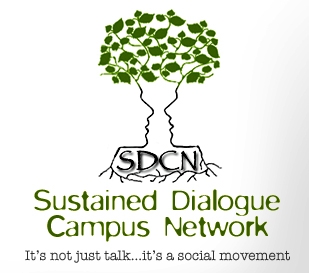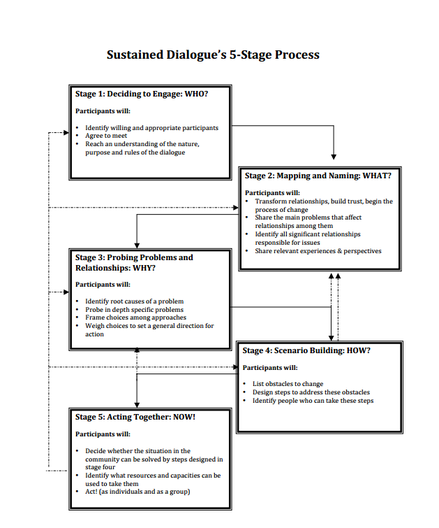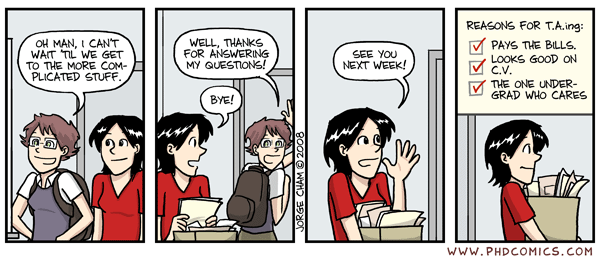Look, you can’t study the entire time. And although I believe you when you say that holing up in your dorm room with some friends to play video games or binge-watch Game of Thrones are ways of socializing, that’s not something you can add to your resume.
Whether you plan on looking for a job, applying for graduate school, or seeking funding, you need to build a competitive resume while in school.
Strategic resume building as a college or grad student includes focusing on one or two activities and demonstrating an ongoing commitment through increased involvement over time. Perhaps you start out as a participant your freshman year, and graduate as the club’s treasurer. Or you offer to help with event planning and fundraising. Maybe you even team up with students from other schools, and expand your organization to include other campuses.
I want to highlight two national organizations available at some of the nation’s leading universities, emphasizing the advantages of joining these or starting your own.
Sustained Dialogue Campus Network (SDCN)
SDCN’s mission is to develop everyday leaders who engage differences as strengths to improve campuses, workplaces, and communities.
WHAT IT ISSustained Dialogue is about conflict resolution through effective communication. Too often that which is foreign to us is interpreted as a threat. We see this in the context of international crises all the time. But students know this also happens on campus. People elect to self-segregate in the dining hall, in the classroom, or in dorms. Perceived differences sometimes manifest themselves as rivalries, or, worse, enmity. Sustain Dialogue is a tool to mitigate conflict by altering our perception of those we deem foreign, different, "other." The premise is to keep talking, because it is through conversation the unknown becomes familiar. SDCN'S HISTORYSustained Dialogue Campus Network is the invention of Dr. Harold Saunders, a conflict resolution expert with over 40 years of experience. In the 1980s Dr. Saunders served as the Deputy Assistant Secretary of State to Henry Kissinger, helping mediate the Arab-Israeli peace agreements. In 1992 Dr. Saunders implemented the 5-Stage Process of Sustained Dialogue in Tajikistan, after the dissolution of the Soviet Union prompted a civil war. In 1999 Princeton students began drawing on Sustained Dialogue to navigate issues associated with race relations on campus. In 2002 Dr. Saunders founded the International Institute for Sustained Dialogue (IISD), and the program spread to the University of Virginia and Dickinson College. SDCN is now a high priority for the IISD, teaching future leaders how to resolve conflict and establish relationships through continued dialogue. WHAT STUDENTS DO
Lets say you hear about this SD thing on campus and decide to check it out. An organizer tallies up participants and breaks them into small groups of 5-8, with 1-2 moderators. This is your core group, which will meet on an ongoing basis for the remainder of the year. The moderator is there to provoke discussion, as well as facilitate communication when group members are nervous, angry, or unsure of what to say. The participants are deliberately matched so as to challenge each other. Groups are meant to self-direct the topics of conversation, with an emphasis on identifying and addressing problems on campus related to racism, sexism, homophobia, or other forms of conflict.
Meetings can get tense - crying, angry words, or silence - but the point is to keep talking through the uncomfortable moments.
WHY IT'S WORTH LOOKING INTO
I was a member of Notre Dame’s Sustained Dialogue chapter during my undergraduate years, starting as a participant and then working my way up into a leadership position. In 2007 I attended the annual training at Princeton University, where I met the organization’s founders and heard more about SDCN’s vision for the future. This includes expanding SDCN chapters to more college campuses, changing the way future leaders understand and approach conflict.
My SDCN training stayed with me long after Notre Dame. The emphasis on conflict resolution prepared me for navigating difficult conversations with family members, ornery professors, and demanding clients. Trust me - when SDCN is on your resume, someone will ask you about it during an interview.
Prospective graduate schools and employers are usually intrigued by the concept and impressed with SDCN’s ability to prepare people to be leaders who leverage diversity to improve our communities and workplaces.
Getting Involved There are a few ways you can participate in SDCN:
- See if SDCN has a program on your campus and become a member
- Initiate a chapter on your campus
- Apply for a job, internship, or volunteer position with SDCN
Check out Part II, detailing how two former SDers from Princeton started their own national organization, Students For Education Reform.
 A 2011 EDUCASE survey reports that 90% of American undergraduates are on Facebook, with 58% of those students logging in daily.
Cultivating Your Social Media Presence It is completely possible to use Facebook to further your academic and professional goals. Although it was originally created to link college students, Facebook opened registration to anyone in 2006. Since then, schools and businesses have used the site as a way to vet applicants. A 2012 Kaplan study reports that 87% of colleges and universities check a student's profile when considering his or her application.
There is a right way and a wrong way to get yourself noticed by an admissions committee or hiring manager. Read on to make sure you are using Facebook to your advantage.
The Right Way to Use Facebook In College Dialogue With Classmates: Converse with other students about projects, assignments, and exams.
Staying Connected With Old and New Peers: If you go to conference and hit it off with someone, friend them and stay in touch. And do not forget your friends from high school and undergrad. Focus on growing your network.
Research: Use Facebook to poll your network about great books, where to find specific archival sources, preferred laboratory instruments, or even ask volunteers to fill out a survey for a study you are running.
Find Extracurricular Activities: Figure out what kind of groups are on or near campus. If you want to join a running team, a juggling club, or a volunteer organization, you can look over their Facebook page and see if the group seems like a good fit for you.
Event Tracker: What's going on, either on campus or in the surrounding area?
The Wrong Way to Use Facebook In College Surfing Facebook In Class: Use Facebook to connect with your classmates outside of class. Listen when you are actually in lecture.
Friending Your Prof or TA: Really, for real, do not do this. They are not your friends, they are your instructors. It is perfectly reasonable that you may develop a friendship after taking a course with someone, but even after the class wraps up, wait for that person to reach out to you over social media.
Poking Your Prof or TA: Similarly, don't even THINK about "poking" them. Mark Zuckerberg explained during a Facebook webinar," When we created the poke, we thought it would be cool to have a feature without any specific purpose. People interpret the poke in many different ways, and we encourage you to come up with your own meanings." Therein lies your problem - you do not want to come across as being cutesy, or, worse, flirtatious, with your instructor.
Documenting Your Rebel Phase: If you post pictures of yourself binge drinking, doing drugs, or participating in some kind of illegal activity, you are sending a message to applications committees that you do not care about rules. I'm not your mother, so I'm not going to lecture you on doing these things. Just know that if you choose to publicize them on Facebook, there's a high chance you will not receive the offers you were hoping for. There are privacy settings for a reason, people.
Bullying: Most schools have a zero tolerance policy for bullying and hazing. Employers are committed to providing non-hostile work environments for their employees. So if you are harassing someone on Facebook for all the world to see then (1) Schools and employers won't want you and (2) Shame on you. Stop it.
Beyond Facebook Incredibly, people are finding work on outlets like Twitter, where some employers look at an applicant's profile and activity and see where, in 140 characters, they stand out from other candidates. LinkedIn is also a fabulous resource for college students who want to start building a professional network.
Finally, if you want to start a blog while a college student, the same rules apply regarding protecting your anonymity. If you're doing something you wouldn't want your parents to see, don't make it searchable for your school or boss either.
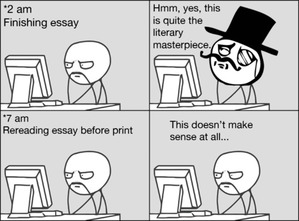 If you're starting papers with something along the lines of, "Throughout all of time and space and history..." - we need to talk.
Students stand out as mature writers among their peers when they demonstrate the ability to go beyond simply regurgitating classroom notes, textbook quotations, and stock phrases, and instead develop and refine their own original writing voices in grammatically-correct papers.
The following are five cardinal sins (as in, unforgivable) of essay writing at the high school and college levels. Avoid these to impress your professor, win over your T.A., and make me shed tears of joy:
1. The One Page "Essay" The essay should not be one long paragraph, and no paragraph should fill an entire page. If it does, go back and break it into smaller points. There are several types of essays, but there are three you can expect to write regularly in school:
Narrative: Applications, especially college applications, ask for this format. The Narrative Essay is usually first-person, autobiographical, and describes a story or process from which you have extrapolated some greater meaning or understanding.
Example: Describe a time you overcame a challenge and what you learned from it.
Expository: Expository essays explain a topic. Some research and analysis are required, and you are to make an argument. These are commonly compare-and-contrast or cause-and-effect papers.
Example: Consider the effects of video games on young people and explain whether this pastime is a positive or negative influence.
Persuasive: This is probably the essay you will be asked to write the most. As the name suggests, you are expected to take a position on a controversial (or at least debatable) topic and detail your argument, refute the counterargument, and offer evidence.
Example: Some people want the the driving age raised from sixteen to eighteen on the grounds that teenagers are not mature enough to handle a vehicle. Do you agree with this? Why or why not? 2. Disorganization
If I have to re-read the same paragraph five times and I still don't understand what you are saying, your wording needs to be reorganized.
If I have no idea what your thesis is, your introduction needs to be reorganized.
If you say you are going to discuss A,B, and C and then you never get to it, your content needs to be reorganized. Same goes for discussing A, then C, then back to A, then a brief mention of B in the conclusion.
If you close your paper with the last paragraph, rather than a conclusion, your ending needs to be reorganized. 3. Clichéd Phrasing
Cliches are sayings that we are used to hearing and reading. If your eyes gloss over when reading the following list, it's because our repeated exposure to them ultimately blunts their meaning and effect:
Throughout all time and space...
In conclusion...
But at the end of the day
All in all
Bright and early
epic battle
Wasn't that boring? I'm sorry I did that to you. Now stop doing it to the people grading your papers.
4. Filler
Filler is anything that is not immediately relevant to the topic and is an obvious attempt at padding out a weak paper. This includes ruminations on the meanings of words, quoting dictionary.com, or taking unrelated tangents.
I also warn students about poetics - if you've just written half a page about the meaning of life and the essay topic is World War II, go back and delete all of it. Then start over, this time addressing the actual assignment.
Avoid using filler by filling out a paper with textual evidence, which you can use as evidence to support the point you are making. Just make sure to explain the quote and connect it back to your overarching point. If you are just sticking random quotes in the paper, that's filler.
5. Lazy Punctuation and Grammar - Write out numbers 1-10. Do not write out years.
- Capitalize proper nouns. Do not capitalize random words.
- Do not use contractions – i.e. write out “don't” as “do not”
- Do not use "very" or "really." The sentence sounds better without it.
“The war was really devastating” vs. “The war was devastating”
- If it is a possessive, use an apostrophe.
- Avoid fragments and run-on sentences
I can't tell you how many times I've seen students write something like, "In the year of nineteen hundred and forty one, the united states entered world war II very ready to fight in the War."
Try: "In 1941 the United States entered World War II."
Shorter? Yes. But it conveys the same information without the grammatical errors, correct punctuation, and omits the filler.
Proofreading Will Be Your Saving Grace
I'll end with a plea for you to proofread your papers before handing them in. Meaning, write your paper. Set it aside for at least two hours, but preferably overnight. Return to it with a fresh eye. Read it out loud. Does everything still sound as fantastic and coherent as it did when you originally wrote it?
If nothing else, you will catch the little typos, punctuation mistakes, and grammatical errors that signal to the grader you did not take the time to review the paper before turning it in.
In most cases, an error-free paper with a clearly defined argument and coherent points will receive a good grade, even if there are some gaps in the content. So please - proofread!
What is a T.A.? A Teaching Assistant (T.A.) is a graduate student who is paid by the university to assist a professor with coursework. They are almost always responsible for grading papers and exams, and sometimes help with giving lectures, running study sessions, writing test questions, and fielding students' questions regarding assignments. Is a T.A. a Professor? No. A T.A. is, however, an instructor and works with the professor to evaluate a student's performance over the semester. Usually, the T.A. is the liaison between student and professor, and is a more immediate source of help and clarification with assignments. T.A.'s are usually required to hold office hours, and can help you when your professor is who-knows-where at some obscure conference two days before the final exam.
How Do I Address My T.A.? Typically, a T.A. will have you address them by their first name - they are not professors or Dr.'s (yet). And most T.A.'s are aware of their (lowly) positions and won't put on any airs about where they stand in the university hierarchy. However, they still merit the same formalities you would use when speaking with or writing to a professor.
So...Is the T.A., Like, A Friend? T.A.'s might seem more friendly, approachable, and accessible than professors (although there are plenty of fantastic professors who also connect with their students) - but they are NOT your friend. Never (ever, ever, EVER) give your T.A. your phone number and tell them to text you, invite them to your dorm room or apartment, or ask them out on a date. You are being overly familiar and can get both you and your T.A. in serious trouble with the school. Is the T.A. My Mortal Enemy? No. I speak from experience when I say T.A.'s do not take home a stack of papers to grade with impish delight at the prospect squashing young students' hopes and dreams. It is, however, disheartening when nine students in a row think a single paragraph counts as an essay, or when they confuse something that happened in World War II with the Civil War, or when they can't even spell the professor's name correctly at the top of the page. How Do I Get My T.A.To Like Me? The same rules to get your professor to like you (or at least respect you) apply here: show up, do your homework, participate in class, respect their time, ask for help when needed, and use their office hours. T.A.'s and professors actually work together on grading, either going over papers together or working from the same rubric. If you receive a poor grade from your T.A., chances are your professor agrees with it. Or might even deduct further points. Bottom Line Personally, being a T.A. was my favorite part of graduate school. I wished MORE students would have showed up to my office hours or asked for help. But I was not immune to becoming disillusioned with students when I saw sloppy papers, a disregard for deadlines, or the hastily concocted fantastical stories for why they missed a meeting or test.
Note: We know when you're lying about your printer spontaneously combusting / contracting a 17 hour deadly virus / your great aunt dying (again).
The best students to work with were those who understood how I served as an ally for them by giving them further insight into the professor's expectations.
A T.A. can be a great ally for students, both the exceptional and the struggling, since they have the ability to empathize with students while serving as an instructor.
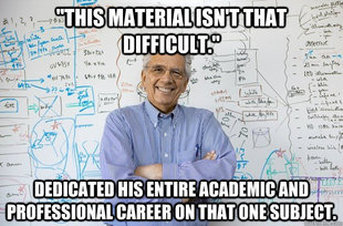 Have you ever had an instructor who:
- Was consistently late or unprepared?
- Couldn't answer questions?
- Who belittled students in class?
Versus someone who:
- Encouraged questions?
- Had clear expectations?
- Made time for students outside of class?
Find The Good Ones! In addition to teaching, instructors at the university-level, including professors, postdoctoral fellows, and graduate students, juggle multiple responsibilities. They are also under pressure to publish their own research, a prerequisite to obtain promotions (especially tenure). For students, this means that your instructor is quite likely experiencing stress and anxiety about completing their own work, even as they are trying to evaluate yours.
However, the good instructors do not take out their frustrations on their students, while ensuring that their classes remain engaging, informative, and fair. The bad ones show up unprepared, are unreasonably angry with students, or give little attention to grading. And then there are the frustrating instructors who are usually harmless, but mentally checked out. Good luck getting your quizzes back before the exam from them.
Signs of a Good Instructor Good does NOT equal easy. In fact, in most cases, I'd classify the best professors as the ones who offer the most challenging coursework commensurate with their students' abilities. Good professors set the bar high, and then show students how to meet their expectations.
These instructors are explicit about how to achieve A's in their course: come to class, participate, hand assignments in on time, and do the reading. When they hand out essay assignments, the prompt details the topic, format, length, and important points to discuss. Good professors provide roadmaps to success.
Additionally, good professors do themselves what they ask of their students. They show up on time, wear professional attire, prepared to teach, ready to answer questions, and are receptive to students' ideas and feedback.
They offer office hours, so that students can receive extra help outside of class, while answering emails promptly. Good instructors make students feel comfortable about admitting when they are struggling, without worrying about losing face. Furthermore, these instructors help students improve their grades by offering them ideas for more efficient study habits, opportunities for extra credit, or help find them additional resources, such as campus writing centers or tutors.
The best instructors are those who promote camaraderie among classmates with extracurricular activities like movie nights, bowling outings, and class dinners. One of my favorite professors used to invite our Russian class to his home at the end of each semester, where we ran around his old house while he cooked a three-course meal featuring two desserts. It humanized our professor, while letting him experience us in our more relaxed states.
Oh, NO...The Bad Professor The worst professors I've had fall on opposite ends of the spectrum: they either had absurd, impossible expectations of their students, or, perhaps even more insulting, handed out A's to anyone who showed up on the class roster.
Here's why the Easy Guy is an instructor to avoid: they don't care. They are completely indifferent to helping you better develop whatever skill or interest you are supposed to be getting out of that class. What incentive do you to do the homework, if you know the instructor isn't going to even look at it? None. There was more than one class where I figured out quickly that doing the work was a waste of my time. So my classmates and I floated through the semester, meeting each week to discuss books we hadn't read. It was a ridiculous waste of time and money.
It's more obvious why the Absurdly Difficult Professors are worth avoiding; they are perpetually undermining your confidence by giving you tasks you are not intellectually mature enough to complete, setting you up for failure.
Some are merely oblivious that not everyone is as smart as them, and they think that if they explain a concept once it should be imprinted in the students' minds - no need for further questions.
But there is a more insidious breed of bad professors - The Humiliator. These instructors use humiliation as a teaching tool, erroneously thinking that fear, anxiety, and a pervasive sense of inadequacy will motivate students. Unfortunately, these tactics produce the opposite effect; students who are consistently made to feel stupid and afraid will disengage from the class altogether, and attempt to just get by until the semester ends.
If The Humiliator is abusive towards you and your classmates, do not hesitate to speak with the relevant department's dean. Arbitrary grades*, verbal abuse, or erratic behavior on the instructor's part warrant an inquiry from above. Students are not whipping boys for angry instructors who are dealing with personal or professional difficulties outside of the classroom.
* Arbitrary grading is NOT when you receive a C on a paper you thought you did better on. It is when a professor's grading is completely removed from the students' abilities or from what the instructor taught them. This is a difficult thing to prove, but I include it because I have witnessed students (myself included) receive grades that were not reflective of what we were told to prepare for. I also had a professor who started handing out F's like candy one semester. The department ultimately corrected those students' grades, after determining the professor was suffering from a mental breakdown.
What If I Don't Have A Choice? The truth is, you're not always going to be able to choose who teaches you. Some classes are required, and they've got the same instructor teaching Econ 101 every year, despite being universally loathed by former students.
If you have a bad instructor, do not be intimidated. In most cases, I suggest you defy your natural inclination to retreat far from them, and instead, make a point of visiting them. Go to their office hours, participate in class, and attend study sessions. Do not give them a reason to ignore you or be indifferent about giving you a bad grade. Moreover, if you think you are being unfairly penalized and choose to protest your grade, you need evidence that you were trying during the semester to obtain help from the professor.
Good professors are worth waking up at 8am for, or sitting through three-hour seminars for. These are the ones who you need to prioritize getting to know, because they will take an interest in you and help you in your future endeavors. Those who feel invested in your success will agree to write you recommendation letters when you are applying for scholarships, grants, or graduate schools.
Just remember there are Good and Bad Students as well - you may not always have a choice who is teaching you, but you do have a choice about how YOU respond to your instructors.
|
